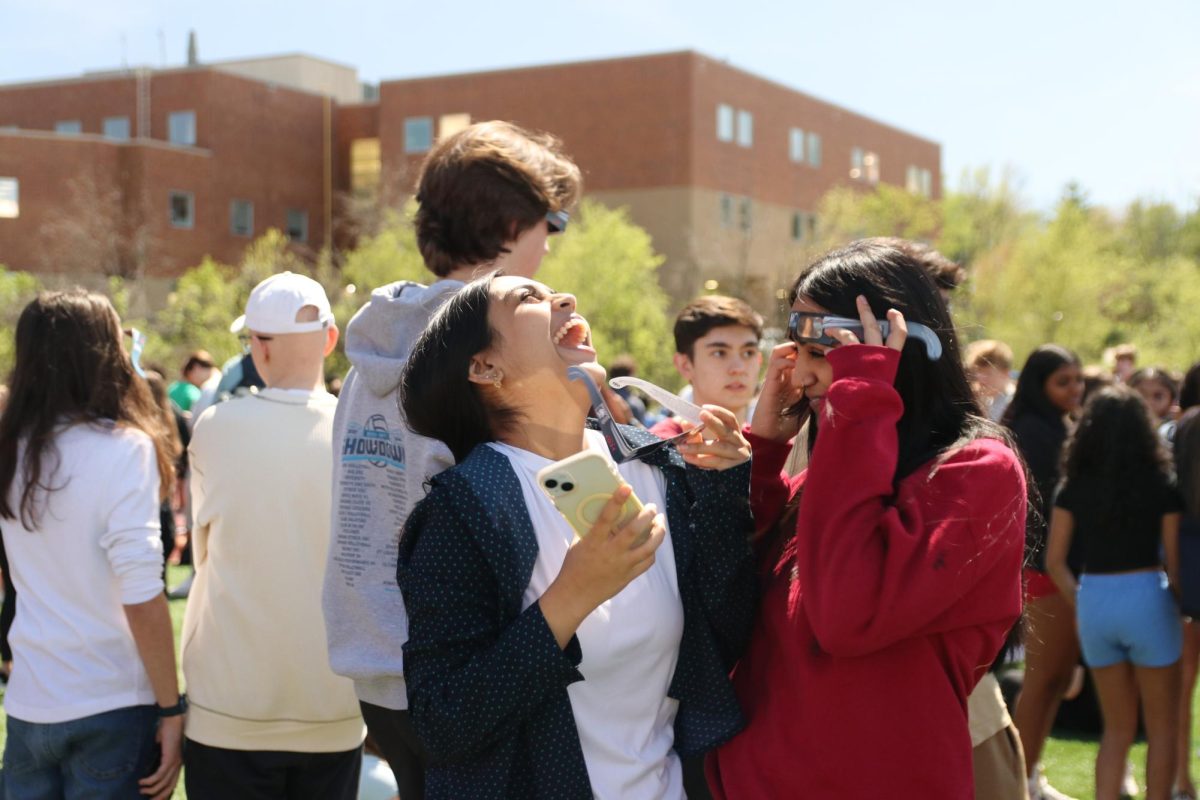Luke Dahlgren, junior, saw a total solar eclipse in elementary school, seven years ago, and said it was a once-in-a-lifetime experience.
“I’m excited for this one as well, even though it’s partial and we won’t be in the direct path,” Dahlgren said. “It’s still a once-in-a-lifetime experience to see.”
During today’s eclipse, only 98.3% of the sun’s visible light will be blocked, so the sky won’t darken. Wearing solar eclipse glasses is highly recommended to protect viewers’ eyes.
“It’s not going to be the same thing I saw in 5th grade, but something I won’t get to see again for a long time,” Dahlgren said, “It’s something to go outside and see. You don’t want to miss it.”
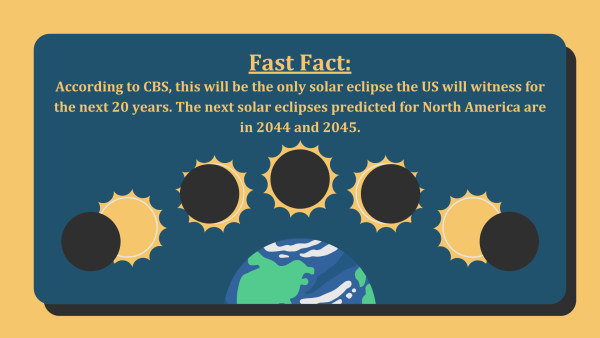
Kevin Koch, science teacher, said a solar eclipse occurs when the moon is positioned in between the sun and the Earth, at the point in which the moon blocks out the sun’s light.
The path of totality is when the moon covers the sun completely, and when the solar eclipse lasts for the longest amount of time.
“In the current state of geologic history, the moon is at a distance from the Earth to where it looks as if it is the same size as the sun,” Koch said. “Due to this, we’re able to block out all of the photosphere and chromosphere of the sun, exposing the sun’s corona, and that makes the solar eclipse very unique during this time.”
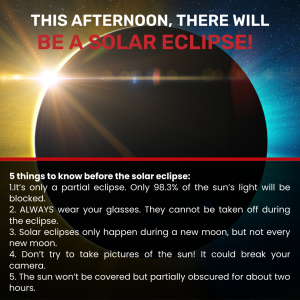
Eclipses happen about four times a year, including solar and lunar eclipses. Lunar eclipses happen during full moons; solar happening during new moons. When the moon’s orbit intersects with the plane of the ecliptic, the plane all the planets in the solar system orbit on, eclipses occur.
“What makes solar eclipses rare is the fact that the shadow of the moon is small compared to the shadow of the overall size of the Earth,” Koch said. “So, only certain, small portions of the Earth will actually be able to visually see those solar eclipses.”
Another component of solar eclipses is how nocturnal animals may begin to make noises.
“If you’re very quiet during the time of totality, you could hear creatures like crickets, toads, or owls come out ,” Koch said.
Dr. Kathy Robertson, science teacher, said that totality depends on location.
“Solar eclipses happen all the time, it is just whether or not you will be in a total solar eclipse,” Dr. Robertson said, “Some consider it a once-in-a-lifetime event, you just have to be willing to travel to see it.”
Total solar eclipses happen all the time, just not in the same location. She said it’s not weird that there was one a couple of years ago and another again today.
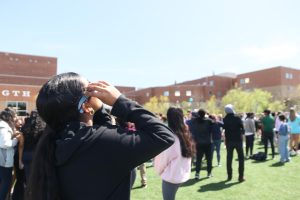
“I think it’s really interesting how this rarely ever happens and it’s super cool to see it especially during the school day,” Singh said.
(Media by Aubrey Lacavich)
“The best places to see it nearby are probably Carbondale, Illinois, or Cape Gerardo,” Dr. Robertson said.
MHS ran a modified B-Day so students could witness the solar eclipse.
“I’m excited to be on the football field with all my friends,” Dr. Robertson said.
Avanti Singh, senior, went outside to see the eclipse with the rest of MHS.
“I think it’s really interesting how this rarely ever happens and it’s super cool to see it especially during the school day,” Singh said.
This story was originally published on Marquette Messenger on April 8, 2024.



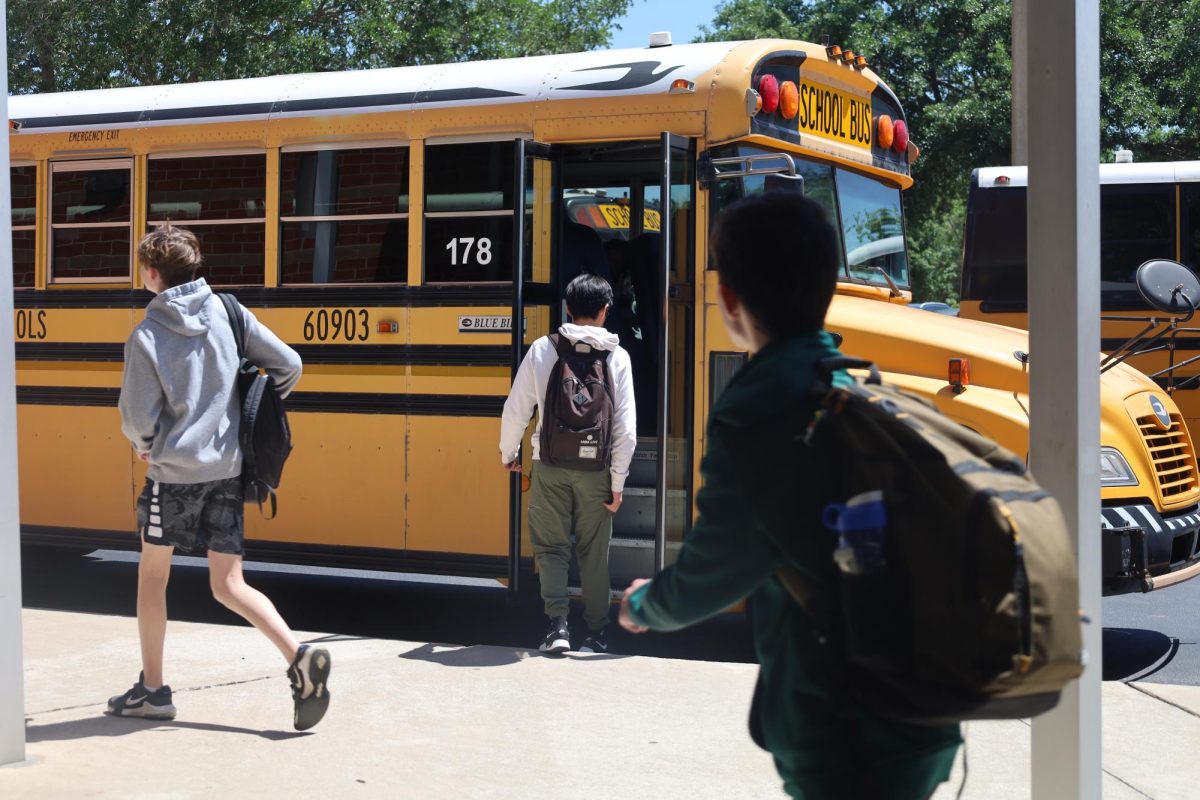



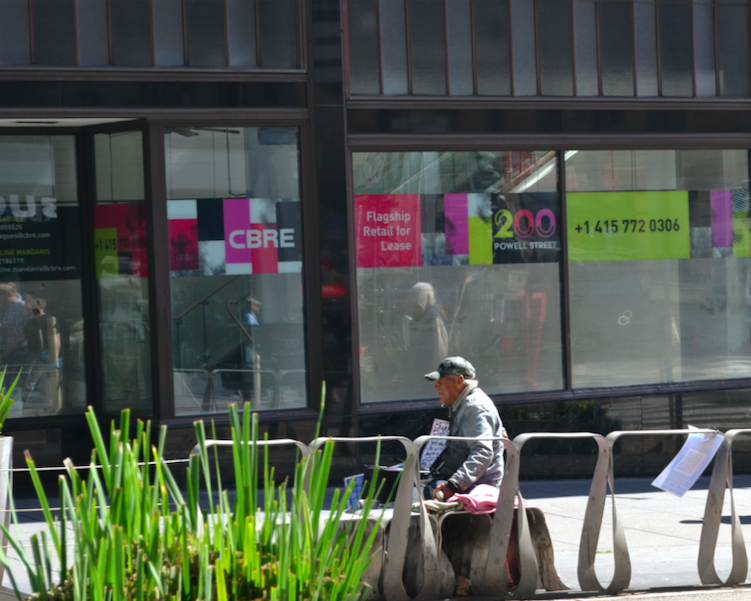


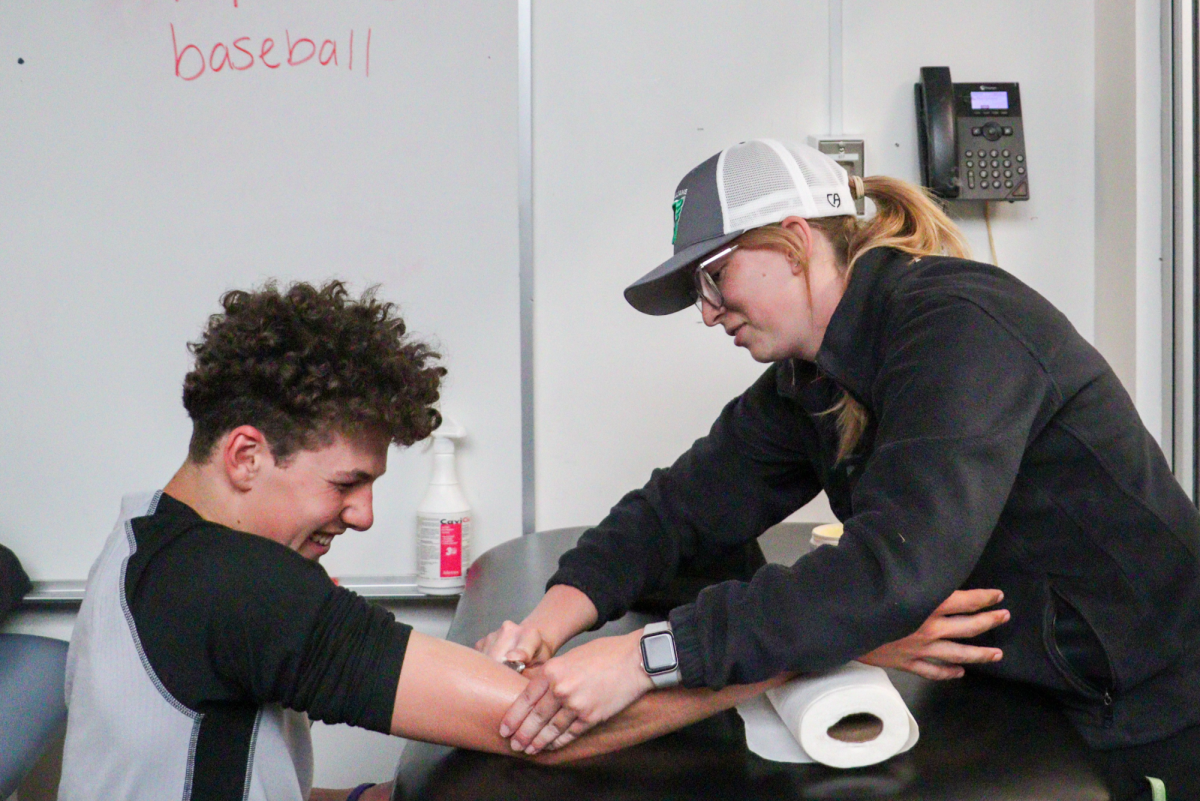




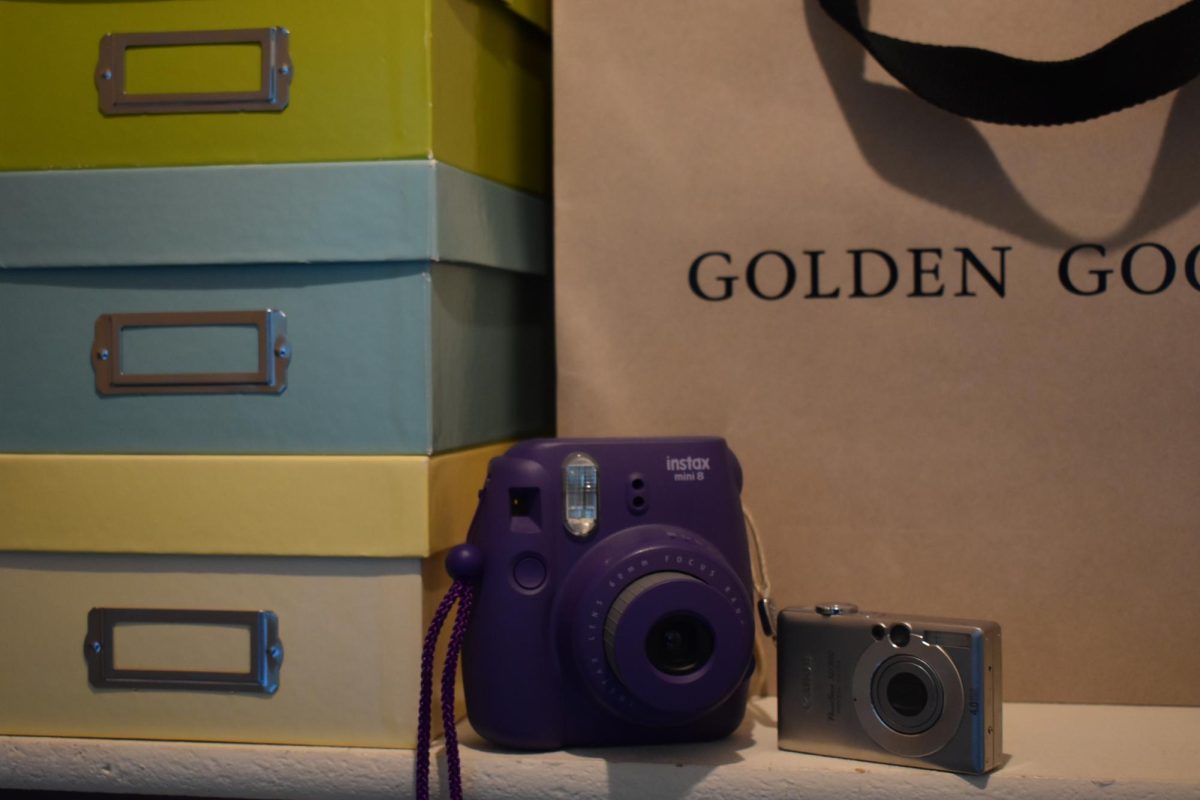





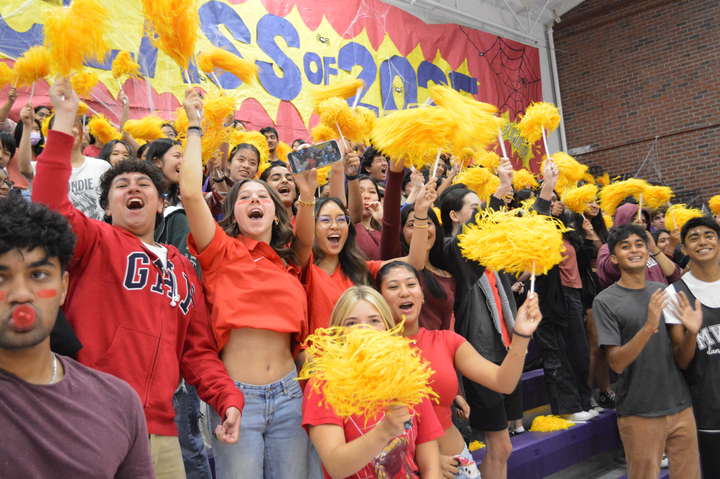
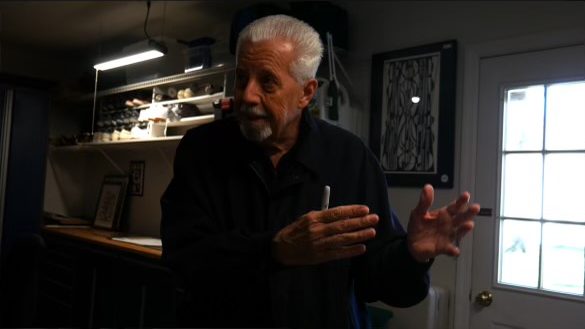
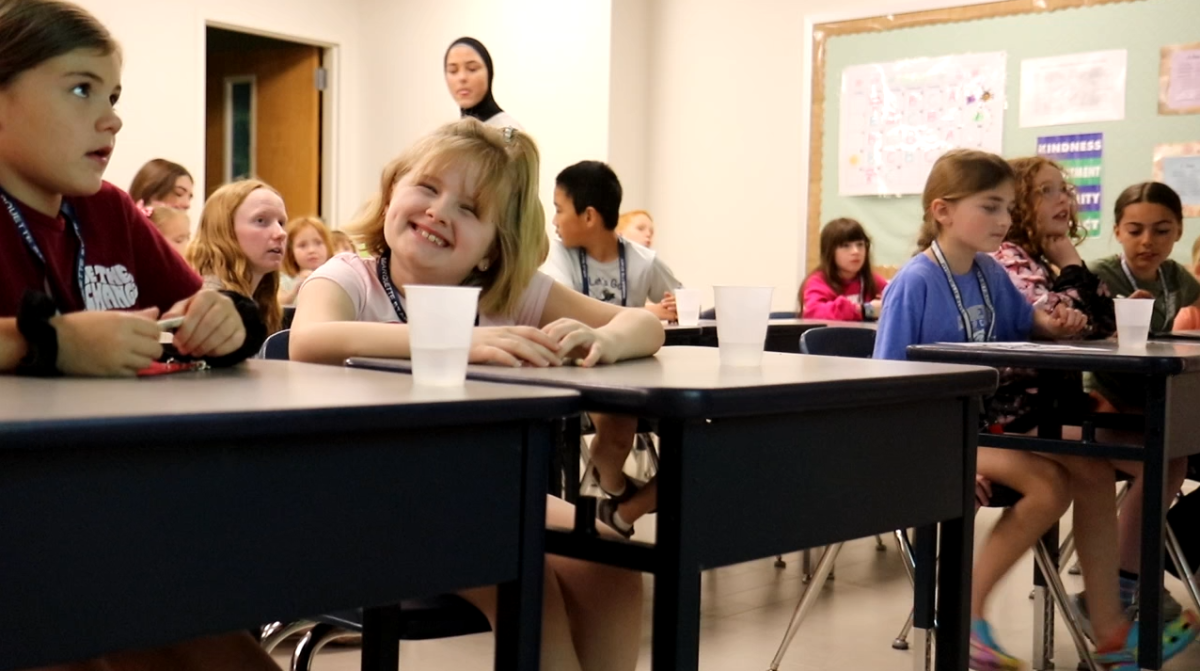








![IN THE SPOTLIGHT: Junior Zalie Mann performs “I Love to Cry at Weddings,” an ensemble piece from the fall musical Sweet Charity, to prospective students during the Fine Arts Showcase on Wednesday, Nov. 8. The showcase is a compilation of performances and demonstrations from each fine arts strand offered at McCallum. This show is put on so that prospective students can see if they are interested in joining an academy or major.
Sweet Charity originally ran the weekends of Sept. 28 and Oct. 8, but made a comeback for the Fine Arts Showcase.
“[Being at the front in the spotlight] is my favorite part of the whole dance, so I was super happy to be on stage performing and smiling at the audience,” Mann said.
Mann performed in both the musical theatre performance and dance excerpt “Ethereal,” a contemporary piece choreographed by the new dance director Terrance Carson, in the showcase. With also being a dance ambassador, Mann got to talk about what MAC dance is, her experience and answer any questions the aspiring arts majors and their parents may have.
Caption by Maya Tackett.](https://bestofsno.com/wp-content/uploads/2024/02/53321803427_47cd17fe70_o-1-1200x800.jpg)
![SPREADING THE JOY: Sophomore Chim Becker poses with sophomores Cozbi Sims and Lou Davidson while manning a table at the Hispanic Heritage treat day during lunch of Sept 28. Becker is a part of the students of color alliance, who put together the activity to raise money for their club.
“It [the stand] was really fun because McCallum has a lot of latino kids,” Becker said. “And I think it was nice that I could share the stuff that I usually just have at home with people who have never tried it before.”
Becker recognizes the importance of celebrating Hispanic heritage at Mac.
“I think its important to celebrate,” Becker said. “Because our culture is awesome and super cool, and everybody should be able to learn about other cultures of the world.”
Caption by JoJo Barnard.](https://bestofsno.com/wp-content/uploads/2024/01/53221601352_4127a81c41_o-1200x675.jpg)


